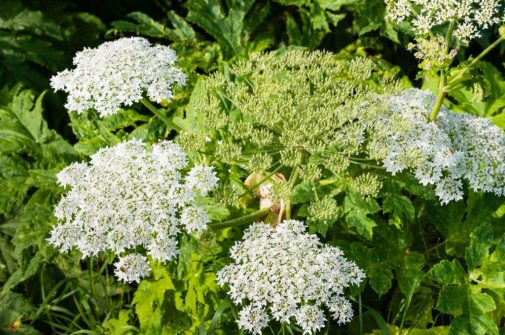Beware of these poison ivy-like plants

Most of us are probably familiar with the notorious poison ivy plant. It has three leaves, grows virtually anywhere and our parents have been warning us about it since we were kids.
Still, as the summer season unfolds and many of us plan trips to parks or maybe just a stroll through the local forest preserve, we may wonder – what else should we look out for?
Dr. Michael Jude Welsch, a dermatologist associated with Advocate Christ Medical Center in Oak Lawn, Ill., shares four common rashes or irritations he has seen from plants, beyond poison ivy: poison oak, poison sumac, stinging nettle and giant hogweed.
The reactions caused by these plants are called “contact dermatitis” because physical contact with these substances creates uncomfortable rashes. What is characteristic about these contact rashes is that they generally appear on a line where your body brushed against the plant.
It is important to remember that first contact with these allergens generally causes no symptoms. The body sensitizes to these substances and gets ready for the next contact. Once someone has an initial contact, each subsequent reaction gets worse.
1. Poison Oak

Contrary to what you may think, this rash doesn’t actually come from oak trees. It comes from the leaves or stems of the western poison oak plant, which looks like a leafy shrub and can grow up to six feet tall, and in some cases, grows like a climbing vine. The leaves usually have three separate leaflets, but there can be up to nine leaflets. Poison oak is found throughout the U.S. in forests and dry areas.
“Poison oak symptoms include extreme itching, a rash or red streaks and patches, blisters that contain and sometimes leak fluid and inflammation,” says Dr. Welsch.
2. Poison Sumac

Dr. Welsch says poison sumac symptoms are similar to those of poison oak and poison ivy, causing an itchy and blistering rash. However, unlike poison oak, this plant is typically found in wet environments.
3. Stinging Nettle

The name says it all. When encountering stinging nettle, Dr. Welsch says you may experience a piercing sting followed by irritation and a burning feeling around the affected area. That’s because the plant has sharp, stinging, tiny hairs that break easily and encompass the entire plant. Contact with this plant may cause red, itchy welts in varying shapes and sizes, for six to 12 hours.
Be careful to watch out for this plant along hiking trails.
Plants like giant hogweed cause rashes when the allergen on the skin is exposed to sunlight. These reactions are called “Phytophotodermatiti” or literally: plants, light, rash.
4. Giant Hogweed

Giant hogweed has stout, bright green stems that are frequently spotted with dark red and hollow red-spotted leaf stalks that produce sturdy bristles. Contact can be severe, causing painful blistering that may lead to permanent scarring. If exposed to eyes directly or indirectly, it causes irritation and may even lead to blindness.
Other phytophotodermatitis come from parsley, celery, carrots, and limes.
“I’ve seen a number of cases where the use of limes in drinks especially in the summer, have caused severe rashes on the hands and lips,” Dr. Welsch says. “So be careful when drinking that margarita or squeezing that lime into your favorite beer.”
Treatments
Dr. Welsch offers the following advice to anyone exposed to the plants and showing symptoms:
- First, wash the assumed affected area with soap and water thoroughly and carefully change clothes they have been exposed.
- Depending on the severity of the rash, it may go away by itself after a couple of weeks. This is often common for rashes like poison ivy, oak or sumac.
- Over-the-counter aids may help relieve the itching and inflammation. Those options include hydrocortisone creams, ointments or a soaked compress, such as Domeboro. In cases of hives, over-the-counter antihistamines are recommended to reduce itchiness.
- In severe cases, seek medical attention.
Related Posts
Comments
About the Author
health enews staff is a group of experienced writers from our Advocate Health Care and Aurora Health Care sites, which also includes freelance or intern writers.

















